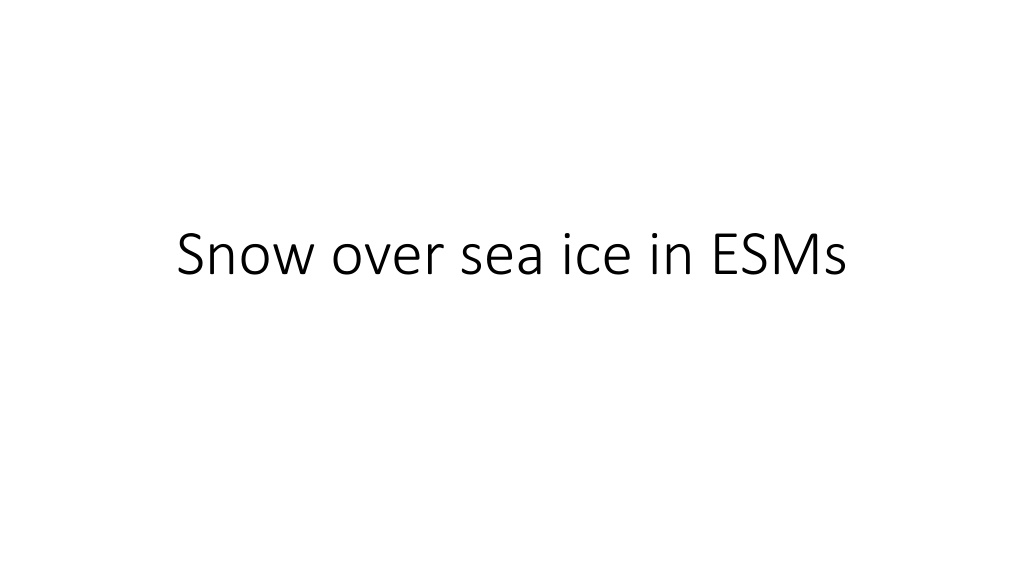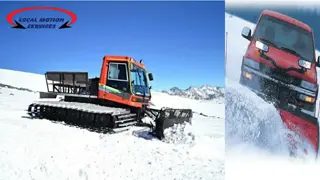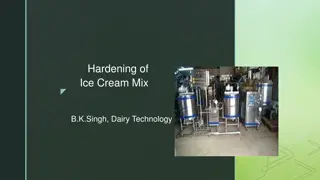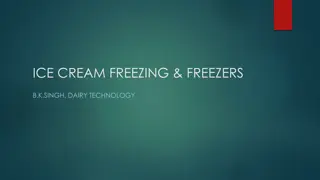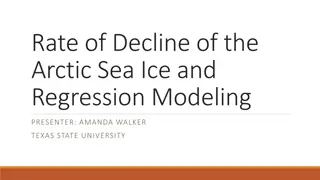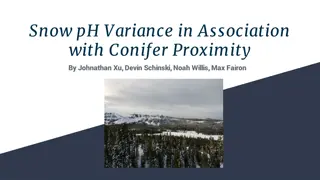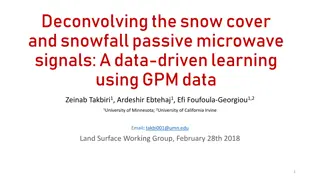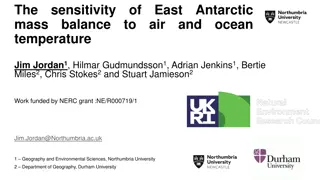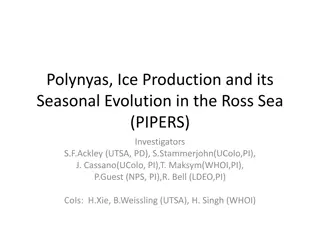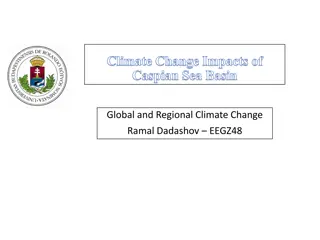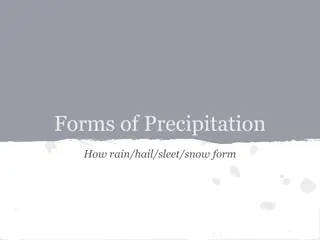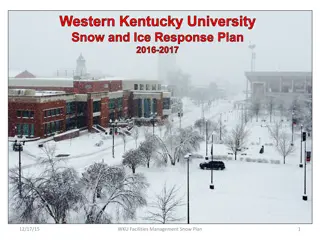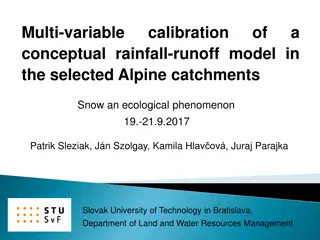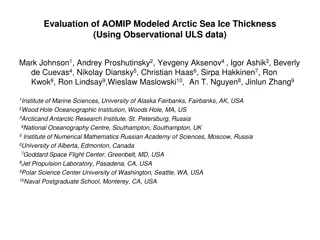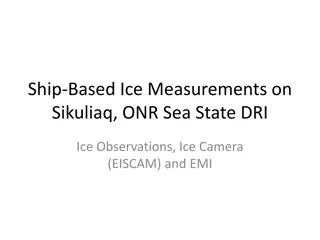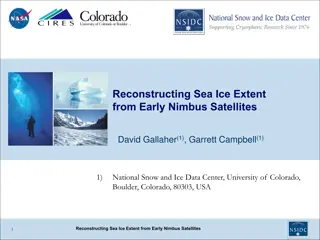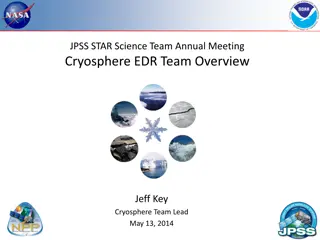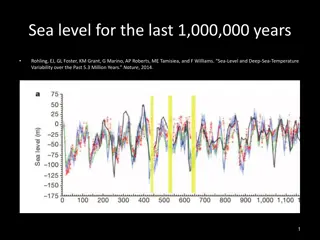The Impact of Snow on Sea Ice in Earth System Models
Snow on sea ice plays a crucial role in Earth System Models, affecting sea ice growth and atmospheric temperatures. While observational studies are limited, ongoing research aims to improve modeling accuracy by incorporating snow-ice interactions. Large-scale studies highlight the importance of Arctic precipitation in predicting future snow depth changes. Explore key findings and emerging trends in the relationship between snow and sea ice dynamics.
Download Presentation

Please find below an Image/Link to download the presentation.
The content on the website is provided AS IS for your information and personal use only. It may not be sold, licensed, or shared on other websites without obtaining consent from the author.If you encounter any issues during the download, it is possible that the publisher has removed the file from their server.
You are allowed to download the files provided on this website for personal or commercial use, subject to the condition that they are used lawfully. All files are the property of their respective owners.
The content on the website is provided AS IS for your information and personal use only. It may not be sold, licensed, or shared on other websites without obtaining consent from the author.
E N D
Presentation Transcript
Snow on sea ice Fairly small community. Sea ice people don t care about snow details. Snow people don t usually go on sea ice. Snow on sea ice unlike snow on land/ice sheets Few observations only (in situ, remote sensing)
Snow on sea ice Snow in sea ice models is fairly simple. In atmospheric models snow on sea ice is rudimentary or even absent Snow affects sea ice growth (Fichefet et al GRL99, Lecomte et al 2015) Snow affects atmospheric temperatures (Batrack & Muller 2019) Snow on sea ice will decrease in the future according the few CMIP- type snow analyses
Snow on sea ice M/ t = P S E M SI P = Precip S = Sublimation E = Erosion M = melt SI = Snow-Ice (conversion of snow into ice from flooding). Specific (no compaction, little aging, no interaction with vegetation) Arctic sea ice: Depth hoar / Wind slab Interaction with topography: accumulation along ridges and loss to leads due to blowing snow Snow ice (Antarctic sea ice)
Key observational studies & reviews Massom et al (1998) Works by M. Sturm Sturm & Massom in Sea Ice book (2017) M. Webster s works (forgot)
Snow on sea ice in atmospheric models Absent or rudimentary Batrack and Muller show large impacts in reanalyses See Nicolas presentation
Snow on sea ice in sea ice models 1 layer of snow, constant density is standard Mass budget terms included Specified-density profile by Olivier Lecomte (2015) Coupling snow model to SI3 Ongoing work by Theo Brivoal (CNRM) in the framework of CrIces project Split of the snow-sea ice interface Replacement of 1-layer snow model of SI3 by ISBA-ES (snow model) Implementation of snow ice into ISBA-ES
Large-scale studies Arctic precipitation capture is key to future Arctic snow depth changes (CMIP5). Depends on snowfall and sea ice seasonality. Hezel et al (2013). Meiners 2024 ? Webster ? CMIP6 CCSM ? Model study by Fichefet & Morales Maqueda (1999) show that Antarctic sea ice is sensitive to snow processes (sublimation, precip, snow-ice) Maksym & Markus (2008) combine satellite and reanalysis products to estimate spatial distribution of snow ice
Snow-to-ice conversion a few facts Weak contribution in the Arctic Snow-ice formation is important for Antarctic sea ice mass balance (Fichefet & Morales Maqueda (1999) 30 cm of snow ice over a season is typical. Linear accumulation along the season (FMM99, MM08) Highest snow ice depth near Antarctic coast (Maksym & Markus 2008) ~1/3 of Antarctic sea ice mass is snow ice say texture analyses (Jeffries et al 97, Worby et al 98); model studies (Vancoppenolle et al 2009)
Snow-to-ice conversion - process Flooding of snow base either by sea water or brine (Massom 2001) Little compaction in the process Thermal equilibration takes ~20 min (Jutras et al 2016) Proper thermal signature lost within a couple of days Remanent salt signature (3-5 g/kg), lost by drainage over time
Snow-ice formation in models Snow below sea level turns into snow ice Sea water fills the snow air pores Heat and salt conservation
Todo Review more recent papers ? obs CMIP ...
